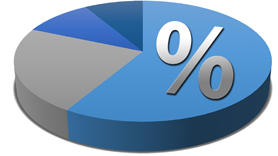The use of units, measurements and conversions plays a big part in excelling in math. The intent of this site is to help visitors perform different varieties of calculations/conversions easily with a high degree of accuracy.
The site includes unit converters for various quantities like currency, length, speed, time, area, volume, mass, temperature, angle, pressure, energy and power. In addition to this, it provides area & volume calculations of different shapes & it's parts. The site also contains several other features like number system conversion, calculation of interests, percentages along with color code finder and many more.
History of Measurement :
The earliest recorded systems of calculations and measures originate in the 3rd or 4th millennium BC. Even the very earliest civilizations needed measurement for purposes of agriculture, construction and trade. Early standard units might only have applied to a single community or small region, with every area developing its own standards for lengths, areas, volumes and masses.
With the development of manufacturing technologies and the growing importance of trade between communities and ultimately across the Earth, standardized weights and measures became critical. Starting in the 18th century, modernized, simplified and uniform systems of weights and measures were developed, with the fundamental units defined by ever more precise methods in the science of metrology.
